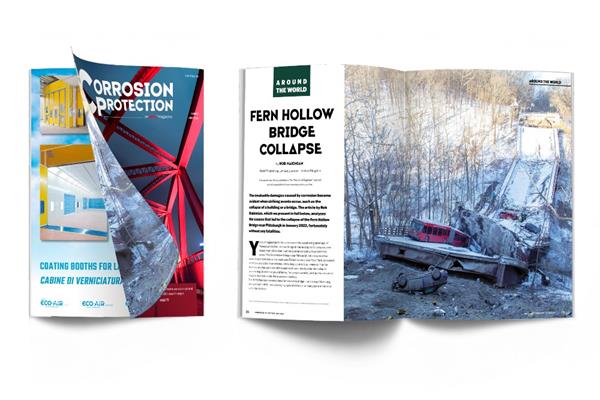
Read the latest issue of the magazine dedicated to corrosion prediction, prevention, protection and mitigation! Special issue on: infrastructure
Infrastructure is an artificial work of great symbolic significance because it expresses the relationship between the individual and society. Infrastructure connects, produces, transports, develops, defends, innovates. Infrastructure marks the territory, changes the landscape, shapes cities. Infrastructure determines the development of civil society and its welfare. According to the definition of Smart City coined by the European Union, cities can transform through investment in technologically advanced infrastructure, thus becoming economically sustainable, more efficient and liveable.
For all these reasons, attention on infrastructure is always very high, also on the part of private citizens: any more or less severe damage it suffers has an almost immediate impact on the lives of individuals and the environment. Just think of the collapse of a bridge, the leakage of an oil platform, the closure of a port or an airport. All these extreme – but not that rare – events are often related to maintenance problems that cause structural failures.
“Build resilient infrastructure, promote sustainable industrialisation, and foster innovation” is one of the UN sustainability goals. The United Nations points to innovation and sustainable infrastructure as essential tools for productivity and income growth, with the aim of achieving better health and education outcomes.
The European Union, through the European Green Deal, has also put sustainability at the centre of its strategies for a new development model. The funds of the Next Generation EU, the aid plan for the European countries most affected by the COVID-19 pandemic, are tied to spending 30% on sustainable infrastructure projects, with the intrinsic goal of mitigating climate change while reducing CO2 emissions.
For infrastructure to be sustainable, it also needs to be long-lasting and require as little maintenance as possible, thanks to maintenance-free materials and coordinated design choices that extend its service life. Dealing with infrastructure and maintenance, however, is extremely difficult and complex due to the variety of structures that fall under this classification and of the materials, disciplines, skills, technical and performance issues, management models and stakeholders involved.
Infrastructure, especially its control and maintenance, is often the subject of Corrosion Protection’s articles. Already in 2012, on the pages of the then ipcm®_Protective Coatings, we anticipated that the challenge for infrastructure in the new millennium would be to implement materials and processes capable of postponing the first maintenance operation
for as long as possible. Let us look together at the state of the art of the technologies needed to measure, prevent, monito, and fight corrosion in civil and industrial infrastructure.
READ THE MAGAZINE!